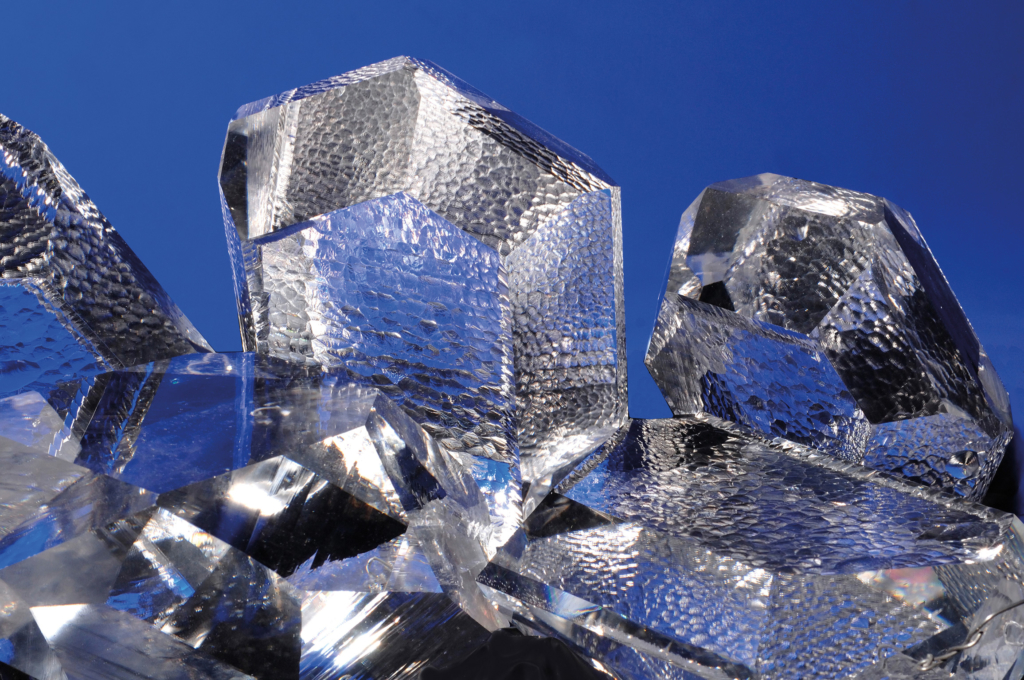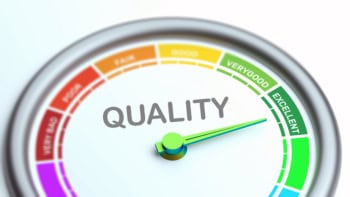From a PhD in semiconductor physics to head of Quartz Products at Airbus Defence and Space, Richard Syme looks back at a long and enjoyable career
Last December I was sitting in the departure lounge at Blagnac Airport in France, waiting for my flight back home to the UK. I had been at the Airbus Leadership University for the concluding part of a course, the last of several trips I made to Toulouse in 2017. Looking back over the last 30 years of my career, from starting my PhD to my current role in the Defence and Space division of Airbus, I began to think about how I progressed to my current role. Was it chance, being in the right place at the right time; was it my own making; or was it the influence of colleagues and managers? I came to the conclusion that it was a combination of all of the above, together with a carpe diem attitude in an evolving business environment that brought me here.
Having intended to study chemistry at university, I was fortunate that the broad natural-sciences course at the University of Cambridge in the UK gave me the chance to decide that chemistry was not for me after one year. So I read physics for the rest of my degree. And having been interested in astronomy since childhood, I took up some astrophysics and cosmology options in my final year, including a short dissertation on pulsar magnetospheres.
At this point I knew that I wanted to deepen my knowledge in an area of physics, but my third-year work had made me feel that I wanted to study something more tangible than stars. Inspired by some excellent solid-state physics teaching in my third year, I therefore decided to apply for a PhD in semiconductor physics at Cambridge. One of the attractions was the prospect of working in the group led by physicist Michael Pepper – known for his work on semiconductor nanostructures – and another was that the PhD was partly sponsored by the General Electric Company (GEC) Hirst Research Centre, thereby keeping open the possibilities of staying in academic research or moving into industry.
I enjoyed my research into thermoelectric transport in two-dimensional electron gases at low temperature, but by the end of my PhD, I decided to take up a research role at GEC, in its Long Range Research Lab. For most of my first three years, I was mainly based at the Cavendish Laboratory because I was working on a project based on new quantum-electronic devices, in which both the university and GEC were taking part. At this stage, I was directly using my knowledge of physics and mathematics every day – whether this was designing semiconductor devices, solving electron-transport equations or measuring the microwave performance of devices.
However, the head of GEC, Lord Arnold Weinstock, had decided he wasn’t getting enough return on his investment in a central research facility and the Hirst Research Centre gradually shrank, ending up as a division of GEC-Marconi Materials Technology before disappearing completely by the 1990s. By now I had started spending half my time working for a department that designed and manufactured quartz oscillators, surface acoustic wave (SAW) filters and thick/thin film hybrids. My first work in this group was understanding the theory behind SAW filters, and converting some SAW design-software to work in a new computing environment.
Moving forward
I quite enjoyed getting back to using Green’s functions for solving the electrostatic problem and the various tricks for getting the software to run fast enough on the mainframe computer – a job that would take three or four hours, compared with 3–4 seconds on a desktop PC today. The other half of my time was spent in the microwave group. This included some interesting work on modelling the propagation of microwaves through ferrites, and also a taste of project management, on the repair and provision of spares for the radiofrequency communications system for the Phoenix unmanned air vehicle.
I was directly using my knowledge of physics and mathematics every day
Richard Syme
I then had the opportunity to either move with the quartz oscillator group to what was then Matra-Marconi Space (now Airbus), or to keep working on the microwave systems for what would eventually become part of BAE Systems or Leonardo. I decided on the former and have been associated with quartz products ever since – first as an engineer, then a project manager and now as head of the group. Our quartz products provide the frequency or timing references in satellite payloads, mostly telecommunications satellites. The space environment is challenging for quartz oscillators – the two main difficulties are withstanding mechanical shocks and in-orbit radiation. The latter requires quartz that is very pure, since it is the impurities (principally aluminium) that give rise to a change in quartz resonator frequency with radiation. At Airbus, we grow our own quartz and it is generally recognized to be the purest in the world.
I do still use my physics knowledge regularly – my semiconductor physics helped in understanding a recent problem at a supplier of transistors – but my objectives at work now are more in line with achieving financial targets, developing people, improving products and processes and ensuring delivery of products. Physicists can be found in many groups at Airbus Defence and Space, from those working on instruments for science missions such as Solar Orbiter, BepiColombo and the Jupiter Icy Moons Explorer (JUICE), to those working on the latest digital signal-processing technology and algorithms.
One of the great things about working at Airbus is the variety of career opportunities that are available, and the training and support that exists to help you. As I mentioned earlier, I’ve been to Toulouse several times this year, to meet Airbus Defence and Space employees from all over Europe, as well as colleagues from the company’s other divisions (commercial aircraft and helicopters) – collaborative work being vital to innovate and improve for the future. This range of opportunities, and the pride in helping to produce some of the world’s best satellite products, are two of the main factors that have kept me at Airbus and given me an enjoyable and satisfying career. Airbus will always have vacancies for physicists, new graduates or those further into their careers, so I hope I have whetted your appetite to find out more about Airbus.




